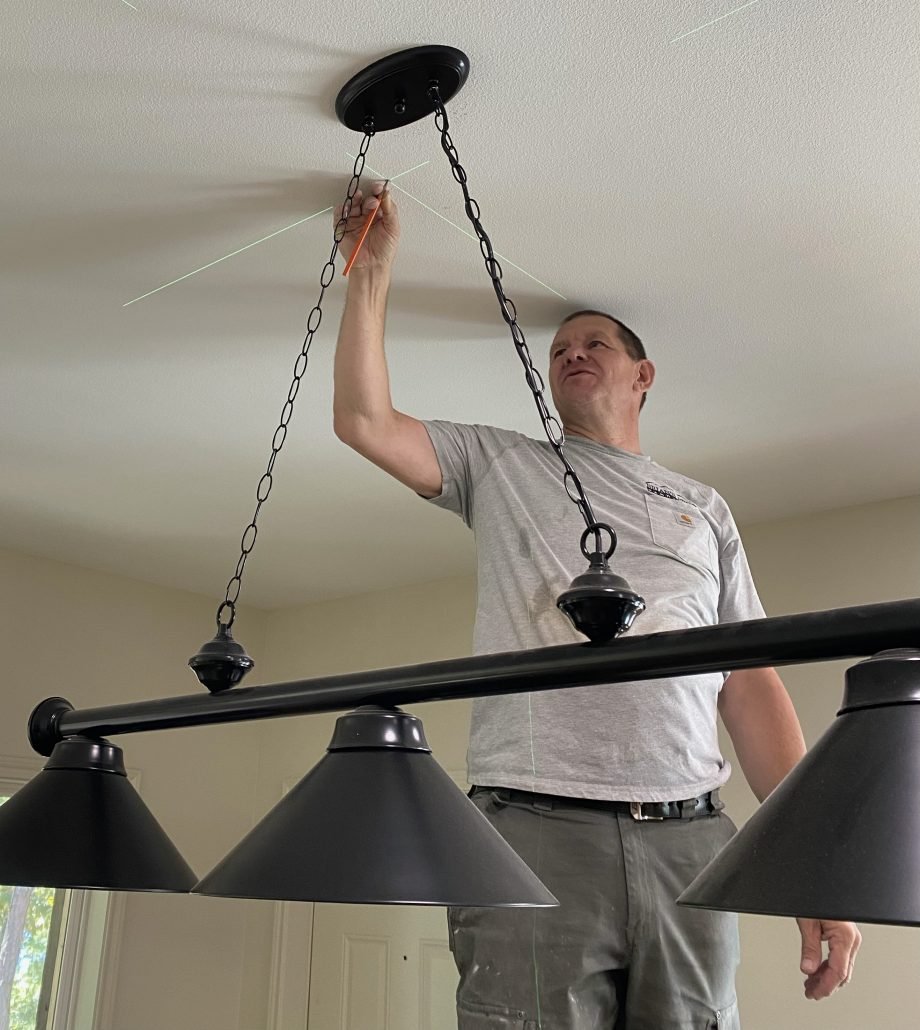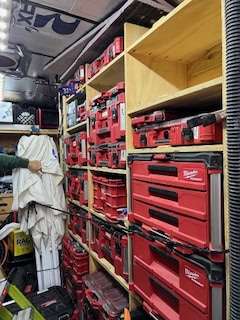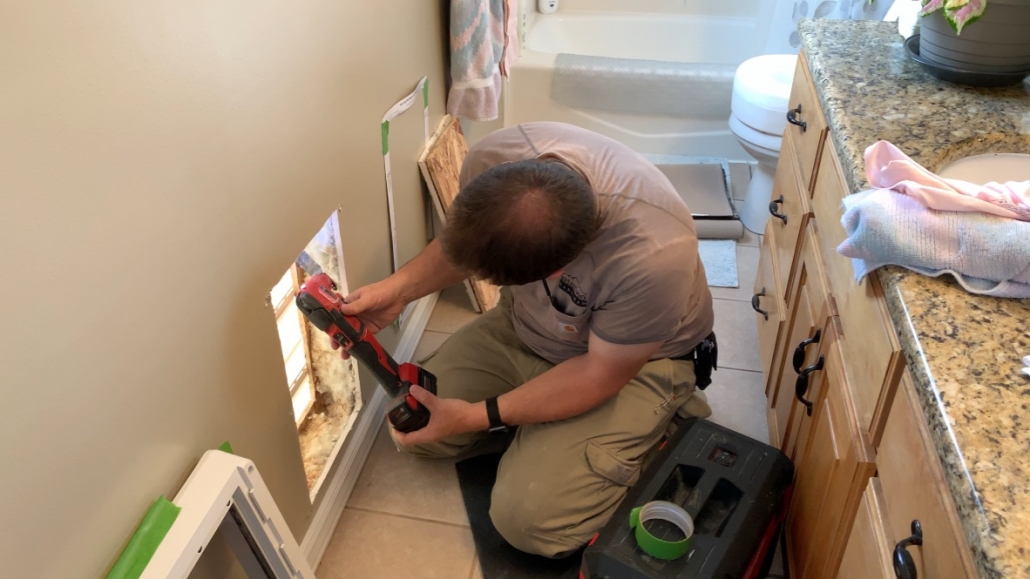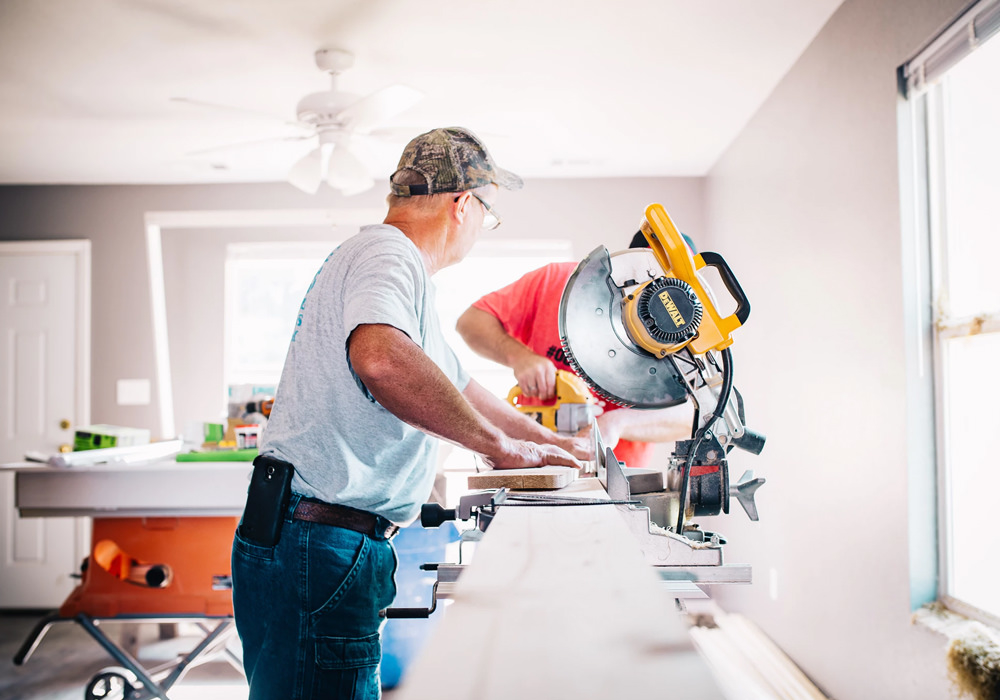
5 Easy Steps to Remove Popcorn Ceilings and Revitalize your Space
Are you tired of staring at that outdated popcorn ceiling in your home? It’s time to say goodbye to the bumpy and unappealing texture and hello to a fresh, modern look. In this article, we will guide you through the 5 easy steps for popcorn ceiling removal and revitalize your space.
By following these steps, you can transform your dull and dated ceiling into a smooth, clean surface that will breathe new life into any room. Removing popcorn ceiling may sound like a daunting task, but with the right tools and techniques, it is a manageable DIY project that can be completed in no time.
First, we will discuss the necessary preparation, including gathering the right materials and protecting your surroundings. Then, we will delve into the removal process, covering everything from wetting the ceiling to scraping off the popcorn texture. We’ll also share tips on how to handle any repairs or imperfections that may arise during the process. Say goodbye to that eyesore of a ceiling and hello to a refreshed, modern space. Let’s get started on revitalizing your home and creating a more inviting atmospher
Why Remove Popcorn Ceilings
Popcorn ceilings, also known as acoustic ceilings or textured ceilings, were once a popular choice in home design, but they have fallen out of favor in recent years. These ceilings were initially introduced as a way to hide imperfections and provide sound-absorbing properties, but they have since become outdated and can even be a source of concern for homeowners.
One of the primary reasons to remove popcorn ceilings is their unsightly appearance. The bumpy, uneven texture can make a room feel dated and uninviting, detracting from the overall aesthetic of your home. Additionally, popcorn ceilings can be a magnet for dust, dirt, and cobwebs, making them challenging to clean and maintain.
Another important consideration is the potential health risks associated with popcorn ceilings. Older popcorn ceilings may contain asbestos, a harmful material that was commonly used in construction materials before the 1970s. Exposure to asbestos can lead to serious respiratory problems, including lung cancer and mesothelioma. If your home was built before 1978, it’s essential to have your popcorn ceiling tested for asbestos before attempting any removal or renovation work.
Removing popcorn ceilings can also increase the value of your home. A smooth, modern ceiling is a desirable feature that can enhance the overall appeal and marketability of your property. By taking the time to remove the popcorn texture and create a clean, seamless surface, you can significantly improve the appearance and perceived value of your home.
Tools and materials needed for popcorn ceiling removal
Before you embark on your popcorn ceiling removal project, it’s essential to gather the necessary tools and materials. Having the right equipment on hand will not only make the process easier but also ensure a successful and safe outcome.
The essential tools you’ll need include:
- Spray bottle or pump sprayer
- Scraper or putty knife
- Drywall or joint compound knives
- Sanding pole and sandpaper
- Plastic sheeting or drop cloths
- Protective gear (goggles, mask, gloves, and coveralls)
In addition to the tools, you’ll also need the following materials:
- Water
- Drywall joint compound or spackle
- Primer and paint (if you plan to repaint the ceiling)
- Caulk or sealant (for any cracks or gaps)
- Painters’ tape (to protect walls and trim)
It’s important to ensure that you have all the necessary tools and materials before you begin the popcorn ceiling removal process. This will help you work efficiently and minimize any interruptions or delays during the project.
Step 1: Preparation and protection
Proper preparation and protection are crucial when it comes to removing a popcorn ceiling. This step ensures that you create a safe and controlled work environment, minimizing the mess and potential health risks associated with the project.
Begin by covering the floor and any furniture or fixtures in the room with plastic sheeting or drop cloths. This will catch any falling debris and make cleanup much easier. Ensure that the plastic sheeting is securely taped down to prevent it from shifting during the removal process.
Next, turn off the power to the room by shutting off the circuit breaker. This will prevent any electrical hazards and allow you to work safely without worrying about damaging light fixtures or other electrical components.
Wear the appropriate personal protective equipment (PPE) throughout the entire process. This includes a respirator mask or N95 dust mask, goggles, gloves, and coveralls. Protect your skin and eyes from any falling debris or dust particles, and ensure that your breathing is protected from any potential asbestos fibers.
Finally, take the time to thoroughly clean and prepare the room. Remove any light fixtures, ceiling fans, or other obstructions that may interfere with the removal process. This will give you a clear and unobstructed work area, making the job easier and more efficient.
Step 2: Wetting the popcorn ceiling
Once you’ve completed the preparation and protection steps, it’s time to begin the actual removal process. The first step is to wet the popcorn ceiling, which will help to soften the texture and make it easier to scrape off.
Fill a spray bottle or pump sprayer with clean water and lightly mist the ceiling, working in small sections. Avoid over-saturating the ceiling, as this can cause the popcorn texture to become too soft and difficult to manage.
Allow the water to soak into the popcorn texture for several minutes, giving it time to fully penetrate and soften the material. You may need to reapply the water in some areas if the texture remains stubborn.
As you work, be mindful of any dripping or excess water. Use a towel or rag to wipe up any spills or drips to prevent water damage to the walls or floors. Maintaining a clean and controlled work environment is essential throughout the removal process.
By wetting the popcorn ceiling, you’re creating the ideal conditions for the next step: scraping off the texture.
Step3: Scraping off the popcorn texture
With the popcorn ceiling softened by the water, it’s time to begin the scraping process. This step requires patience and a steady hand, as you’ll need to carefully remove the textured material without damaging the underlying drywall.
Start by holding your scraper or putty knife at a shallow angle, approximately 15 to 30 degrees, and gently scraping the ceiling. Apply moderate pressure and work in a smooth, consistent motion, removing the popcorn texture in small sections.
Be mindful of any areas that may be more stubborn or difficult to remove. You can try reapplying water or using a slightly more aggressive scraping technique, but be cautious not to damage the drywall underneath.
As you scrape, be prepared for a significant amount of debris and dust to fall. Continue to work in small, manageable sections, and use a drop cloth or plastic sheeting to catch the falling material. Regularly clean up any debris to maintain a clean and safe work environment.
Once you’ve removed the majority of the popcorn texture, you may notice some residual material or uneven areas. Don’t worry – the next step will address these imperfections and help you achieve a smooth, even surface.
Step4: Repairing and smoothing the ceiling surface
After removing the popcorn texture, you’ll likely be left with a less-than-perfect ceiling surface. This is where the repair and smoothing process comes into play, ensuring a clean and seamless finish.
Begin by inspecting the ceiling for any cracks, holes, or uneven areas. Use a drywall knife or putty knife to apply a thin layer of joint compound or spackle to these imperfections, smoothing them out as you go. Allow the compound to dry completely, then lightly sand the area to create a smooth, uniform surface.
If there are larger areas that need more substantial repair, you may need to use drywall tape and additional joint compound to create a smooth, seamless transition. Apply the tape and compound in thin, even layers, allowing each layer to dry completely before sanding and moving on to the next.
Once the repairs are complete, you’ll want to sand the entire ceiling surface to ensure a smooth, even finish. Use a sanding pole or block and start with a coarser grit sandpaper, gradually moving to a finer grit as you refine the surface. Be sure to wipe away any dust or debris between sanding sessions to maintain a clean work area.
After the final sanding, use a damp cloth or tack cloth to remove any remaining dust particles. This will help the primer and paint adhere properly in the final step.
Step5: Painting or finishing the ceiling
With the popcorn texture removed and the surface repaired and smoothed, it’s time to give your ceiling a fresh, new look. Painting or applying a finishing treatment is the final step in the popcorn ceiling removal process, and it’s essential for achieving a polished, professional-looking result.
If you’re planning to paint the ceiling, start by applying a high-quality primer. This will help to seal the surface and provide a smooth, even base for the paint. Be sure to use a primer that is specifically designed for use on drywall or ceilings, as this will ensure the best possible adhesion and coverage.
Once the primer has dried, apply at least two coats of a high-quality ceiling paint, using a roller or paint sprayer for the best results. When painting, work in small sections, overlapping each stroke to ensure an even, consistent finish. Allow the paint to dry completely between coats, following the manufacturer’s recommended drying times.
Alternatively, you may choose to apply a finishing treatment, such as a smooth, textured, or knockdown finish. These options can provide a unique and visually interesting surface, while still maintaining a clean, modern look. Follow the manufacturer’s instructions carefully when applying these types of finishes, as they may require additional tools or techniques.
After the final coat of paint or finishing treatment has dried, take a step back and admire your handiwork. The once-unsightly popcorn ceiling has been transformed into a smooth, seamless surface that perfectly complements your home’s decor.
Tips for successful popcorn ceiling removal
Removing a popcorn ceiling can be a challenging task, but with the right preparation and techniques, it can be a manageable DIY project. Here are some additional tips to help ensure a successful and safe popcorn ceiling removal:
- Test for asbestos: Before starting any work, have your popcorn ceiling tested for asbestos. If it contains this hazardous material, it’s best to hire a professional abatement company to handle the removal process.
- Work in small sections: Tackling the ceiling in manageable sections will make the job more manageable and help you maintain control over the debris and dust.
- Use a spray bottle or pump sprayer: Keeping the popcorn texture consistently moist will make the scraping process much easier.
- Avoid over-wetting the ceiling: Too much water can cause the texture to become too soft and difficult to remove.
- Take breaks and stay hydrated: Popcorn ceiling removal can be physically demanding, so be sure to take regular breaks and stay hydrated throughout the process.
- Dispose of debris properly: Collect all the popcorn texture and debris in heavy-duty trash bags and dispose of them according to local regulations.
- Consider hiring a professional: If you’re not comfortable with the DIY approach or the ceiling is particularly challenging, it may be worth hiring a professional popcorn ceiling removal service.
Conclusion
Removing a popcorn ceiling can be a transformative project that breathes new life into your home. By following the five easy steps outlined in this article, you can successfully remove the outdated texture and create a smooth, modern ceiling that enhances the overall aesthetic of your space.
Remember to take the necessary precautions, gather the right tools and materials, and work carefully and methodically throughout the process. With patience and attention to detail, you can achieve a professional-looking result that you’ll be proud to showcase.
Say goodbye to that dated popcorn ceiling and hello to a refreshed, inviting space. Embrace the opportunity to revitalize your home and enjoy the benefits of a smooth, seamless ceiling for years to come.
5 Easy steps to remove popcorn ceiling and revitalize your space



